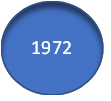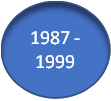

THE EARLY YEARS
On April 1, 1972, five former IBM workers (Dietmar Hopp, Hasso Plattner, Claus Wellenreuther, Klaus Tschira, and Hans-Werner Hector) started the company System Analyse Programmentwicklung (System Analysis Program Development), shortened to SAP. They first idea was establishing standard for enterprise software that integrated all business processes and enabled data processing in real time.
SAP´s founders and workers worked closely with customers, often sitting side-by-side with customers’ workers to learn their business needs and processes.
In 1975, they had built systems for financial accounting (RF), invoice verification, and inventory management (RM). Several of early customers were nylon factory which belong to ICI in Östringen, Germany, Knoll, Burda, Linde, and Schott. Combination of real-time data processing, standardization, and integration is the key for SAP’s shifting from a small German company into a global leader in business software.
In 1979, R/2 started to be developed which is the second generation software.
In 1980, SAP´s have about 80 employees and moved into their first own office building in Walldorf, Germany.
During that time, SAP has grown steadily by expanding the market and acquisitions worldwide to shift from a small German startup company into one of the world’s largest tech companies and a global leader in business software.
And it has never lost its pioneering spirit or its determination to create great solutions that change people’s life for the better.
SAP established the global standard for enterprise resource planning (ERP) software by introducing of its original SAP R/2 and SAP R/3 software.
From <https://www.sap.com/sea/about/company/what-is-sap.html>

FROM R/3 TO GLOBAL PLAYER
In 1987, in spite of having big success with R/2 sales, company’s managers started to develop its third generation of software. A year later, SAP entered stock market with an IPO. The SAP R/3 launched in 1992, with the client-server software smoothing the path to a globalized economy, turning SAP into a global player with subsidiaries and development centers across the world.
In 1999, SAP dive into Internet and new economy by launching its mysap.com strategy. In 2009, the company diversified its line of business into three markets of the future: mobile technology, database technology, and cloud. To rapidly become a key player in these new domains, SAP acquired a number its competitors, including Business Objects, Sybase, Ariba, SuccessFactors, Fieldglass, and Concur.

INTO THE CLOUD WITH SAP HANA
In 2011, SAP HANA in memory database being used for the first time by SAP customer. As a result, time has been reduced from days or weeks to seconds for data analysis. In 2015, SAP launched SAP S/4HANA which is the latest generation of business software running entirely on SAP HANA. SAP committed to enable every enterprise to become intelligent, networked, and sustainable by bringing together the solutions, technology, and best practices needed to run integrated, digital business processes in the cloud.
SAP provides choice across the four largest hyperscale cloud vendors. SAP integrated applications connect all parts of a business into an intelligent suite on a digital platform. SAP Business Technology Platform combined application development, data and analytics, integration, and AI into one platform. It is a core element of SAP’s “RISE with SAP” offering.
Currently, SAP has more than 240 million cloud users with more than 100 solutions covering all business functions and the largest cloud portfolio of any provider. SAP operates 65 data centers at 35 locations in 16 countries.
Further detail history can be found on https://www.sap.com/sea/about/company/history.html

Ini baru posting ya?